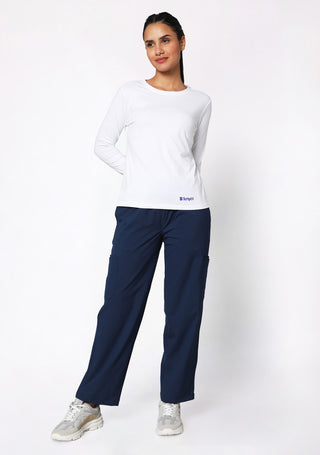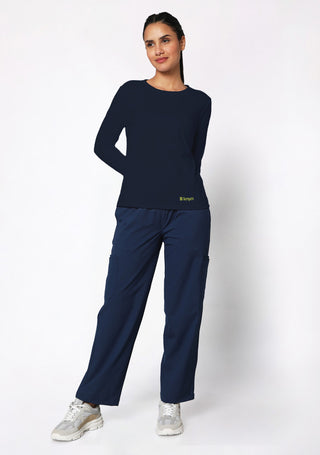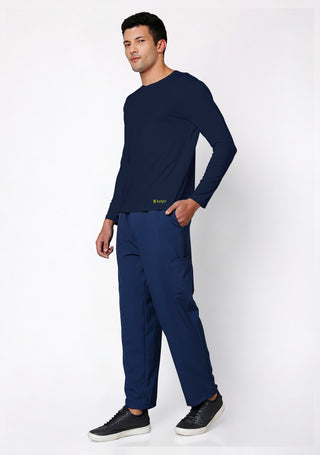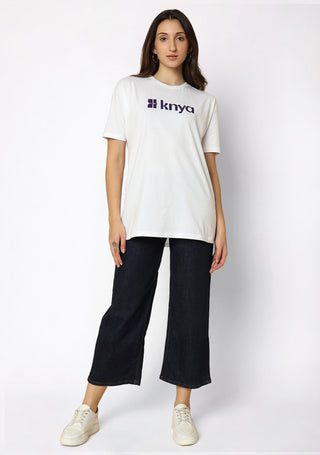Hospital dress codes aren’t arbitrary—they are an essential part of maintaining a safe, professional, and trustworthy environment for patients and staff alike. Navigating these dress codes successfully means choosing attire that balances hygiene, professionalism, comfort, and safety.
Knya’s line of medical apparel rises to this challenge beautifully. With thoughtfully crafted scrubs, lab coats, and accessories designed specifically for healthcare professionals, Knya helps doctors, nurses, and hospital staff meet dress code requirements without sacrificing style or comfort.
Understanding the Importance of Hospital Dress Codes
Hospital dress codes are more than just rules—they're the foundation of a safe and professional medical environment. These policies are designed with several goals in mind:
-
Hygiene and Infection Control: Hospitals are high-risk zones for the spread of infections. Dress codes help minimize this risk by requiring specific materials, proper coverage, and easily washable garments.
-
Professionalism and Trust: Patients feel more comfortable and confident when they see healthcare providers who look neat, clean, and professional.
-
Role Identification: Different colors or styles help distinguish doctors, nurses, surgeons, and administrative staff, ensuring smoother hospital operations.
-
Safety: Certain dress standards prevent hazards like loose clothing that could catch on equipment or inappropriate footwear that could lead to slips and falls.
Given these factors, it’s no surprise that hospitals take their dress codes seriously—and expect their employees to do the same.
Comfort meets style. Explore All Women's Scrubs and discover the perfect fit for your busy day.
Common Elements of Hospital Dress Code Policies
While dress code details can vary between institutions, some elements remain consistent across most healthcare facilities:
Scrubs
Scrubs are the uniform staple for most hospital personnel. They must be:
-
Clean and Well-Fitting: Baggy or overly tight scrubs are often prohibited for both hygiene and professional appearance reasons.
-
Color-Specific: Many hospitals assign scrub colors by department or role—for example, navy for doctors, light blue for nurses, and green for surgical teams.
-
Minimal Prints: Solid colors or simple patterns are preferred to maintain a professional look.
Lab Coats
For doctors, lab coats symbolize authority and trust. Key points include:
-
White or Light Colors: Traditional white lab coats are still the gold standard, though some hospitals allow pastel shades.
-
Length: Typically knee-length for senior staff; shorter jackets may be used by interns or students.
-
Cleanliness: Lab coats must be laundered regularly to maintain a pristine appearance.
Footwear
Proper shoes are crucial for long shifts and must meet several standards:
-
Closed-Toe: To protect against spills or dropped instruments.
-
Slip-Resistant: Reduces the risk of falls in fast-paced environments.
-
Comfortable: Given the physical demands of the job, cushioned, supportive footwear is a must.
Personal Grooming and Accessories
Appearance is holistic; it’s not just about clothes:
-
Minimal Jewelry: For safety and hygiene reasons.
-
Tidy Hair: Hair should be secured away from the face, especially during procedures.
-
Minimal Makeup and Neutral Nails: Natural, unobtrusive looks are preferred.
PPE (Personal Protective Equipment)
In today's post-pandemic healthcare setting, PPE remains a part of daily attire for many professionals:
-
Masks, Gloves, Gowns, Face Shields: Depending on the role and the department, PPE might be part of the expected dress.
Understanding these guidelines helps healthcare workers choose the right apparel—and that’s where brands like Knya come into the picture.
Discover the best lab coat designed for comfort and protection. Shop from here.
How Knya’s Offerings Align with Hospital Dress Codes?
Knya recognizes the unique demands placed on healthcare professionals. Their apparel is thoughtfully designed to support comfort, functionality, and professionalism, seamlessly aligning with common hospital dress code standards.
Here’s how:
High-Quality Scrubs
Knya’s scrubs are made with antimicrobial, breathable fabrics that resist bacteria and are easy to launder—perfect for maintaining hospital hygiene standards. Their designs offer:
-
Tailored Fits: Knya scrubs strike the perfect balance between comfort and a professional silhouette.
-
Color Options: With a wide range of solid colors, Knya supports color-coded uniform policies while letting staff choose hues suited to their roles.
-
Durable Materials: Fabrics withstand repeated washes without fading or losing shape, critical for maintaining a polished look shift after shift.
Professional Lab Coats
Knya’s lab coats are crafted with the same attention to detail:
-
Crisp Whites and Soft Pastels: Catering to traditional and modern hospital environments alike.
-
Practical Features: Ample pocket space for stashing pens, notepads, and tools—without compromising the coat’s clean lines.
-
Easy Maintenance: Their coats resist wrinkles and stains, helping doctors maintain a professional appearance all day long.
Footwear Compatibility
While Knya focuses on apparel, their designs easily pair with the closed-toe, supportive footwear standards mandated by hospitals. The length and cuts of their scrubs allow for a neat fall over sneakers or clogs, completing a tidy and safe professional look.
Thoughtful Additions
Beyond scrubs and coats, Knya offers accessories and options that fit seamlessly into hospital life:
-
Underscrub Tops: Ideal for layering in cooler environments without adding bulk.
-
Compression Socks: Supporting circulation during long hours on one's feet.
-
Minimalist Designs: Prints and styles are professional and understated, ensuring compliance with even the strictest dress code policies.
Focus on Comfort and Movement
Healthcare workers spend hours on their feet, bending, lifting, and moving constantly. Knya’s four-way stretch fabrics and ergonomic designs ensure ease of movement—no tugging, pulling, or discomfort—keeping professionals focused on what truly matters: patient care.













